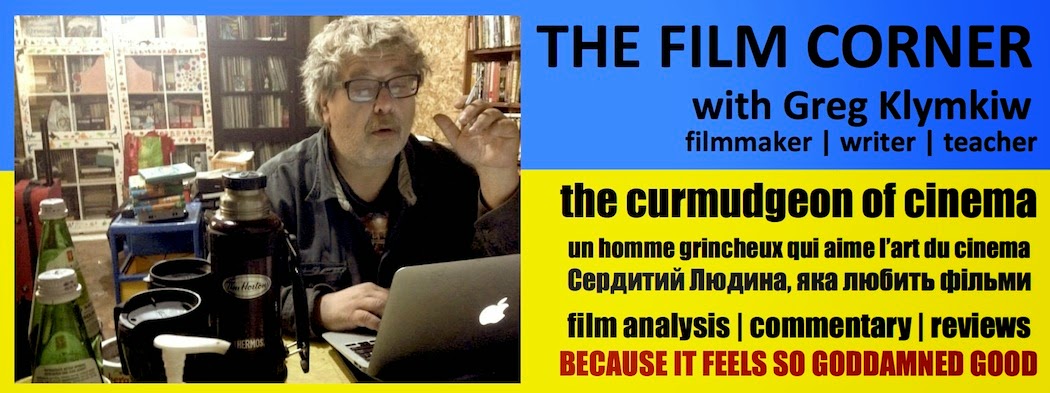A journalist (Katia Winter) searches for an old college chum (Michael McMillian) who disappears after experimenting with the same mind altering drugs actually used in secret experiments conducted by the American government during the 50s and 60s. She teams up with an irascible alcoholic druggie (Ted Levine) who is modelled - not at all loosely - upon the late "Fear and Loathing" author Hunter S. Thompson. What they discover is far more horrifying than anything, anyone could ever possibly imagine.
 |
| Babe-o-licious star Katia Winter displays her exquisitely large mouth designed especially for SCREAMING!!!!! |
Dir. Blair Erickson ***1/2
Starring: Katia Winter, Ted Levine
Review By Greg Klymkiw
On a level of pure visceral horror, The Banshee Chapter could be the most terrifying movie of the past decade. This relentlessly intense first feature by writer-director Blair Erickson creeps about with a slow burn, mounting steadily with each passing scene until it begins tossing the tried and true shock cuts when you least expect them. After each and every wham-bam of a cinematic sledge hammer to the face, I found myself literally clutching my chest, gasping for breath and croaking out, repeatedly: "Jesus Christ!" There's absolutely no denying the sheer force and directorial skill on display, however, the shocks are earned by an utterly horrific backdrop.
One of the scariest elements in the movie is the use of "numbers stations" within the context of some supremely creepy story beats. Numbers stations are well known to shortwave enthusiasts as the ultra-ominous broadcasts of code-like messages using a combination of spoken numbers and gibberish - usually uttered by disembodied voices of mostly women or even more hair-raisingly, children. Often assumed to be coded signals from various nations' espionage agencies, conspiracy theorists believe that many of them go well beyond the purview of mere government code and perhaps represent something even more insidious. Given that The Banshee Chapter goes out of its way - not only to scare the crap out of us, but to give us an acute case of the willies, it's safe to say we're treated to some of the most viciously vulpine assaults upon our collective psyches.
 |
Katia Winter discovers something that makes her happy she's wearing "DEPENDS" |
The blasts of radio frequencies, the use of real stock footage and recreated "stick footage" and yes, all the diarrhea-inducing shock cuts combine beautifully to throw us aboard a roller coaster ride of terror we are often begging to be let off of. Everything that contributes to the movie's success as a pure horror film of the highest order are indeed present.
I think it's also important to note that the movie has more shock cut scares per capita than anything released in years. Some critics might make the mistake of crapping on this as "cheap" tactics, but they can just shove their collective heads and snobby noses back up their respective assholes as far as I'm concerned. There's nothing "cheap" about this tactic. In fact, it was a stylistic tool invented by one of the greatest pioneers of horror in cinema history, the legendary chief of the genre division at the old studio R.K.O. Pictures.
The first time this sort of scare ever occurred was in 1942's The Cat People, that wonderful collaboration twixt Lewton, Jacques Tourneur and DeWitt Bodeen. When the shock came in that film, audiences all over the world filled their drawers. Lewton repeated the shock throughout several of his classic films and there was nothing cheap about it because it not only scared people, but was rooted within the whole notion of scaring people with the unknown, the dark and shadows and was also a natural tool within the storytelling itself. (The shock comes during the "walk in the park" sequence and what causes us to jump is what directors and crew - for decades afterwards - would refer to as "The Bus" whenever shots were being set up for eventual use in shock cut sequences. See the movie - most of you probably haven't - and you'll see why all the stalwart old crew hacks called these scenes "The Bus".)
The only time the scare is "cheap" is when there's nothing else in the picture. This is hardly the case with The Banshee Chapter since it pretty much never relies on overt violence or bloodletting, but comes from elements that are not only unique to the narrative, but are perfectly in keeping with the sense of pure paranoia that infuses Erickson's fine picture.
This, I think, however, is why it's a bit disappointing that the consistency in terms of visual storytelling seems somewhat arbitrary. We never are sure what perspective Erickson favours. At times, we feel like we're following a documentary film made by our leading lady, at other times, it feels like someone else's documentary, while yet again, the movie engages in the tropes of "found footage".
 |
| Do you really want to know what's being extracted here and why and how it will be used? Yeah, I thought not. |
Most importantly, none of this changes the fact that I soiled a pair of pants and boxers that needed to go straight into the laundry after I saw The Banshee Chapter. Next year, I think I might need to attend the Toronto After Dark Film Festival adorned with some "Depends" - kind of like those pathetic gamblers at the casinos.
Hell, maybe After Dark topper Adam Lopez needs to cut a promotional tie-in with the Depend® brand. I give you this idea, Adam - FREE OF CHARGE. Use it!
"The Banshee Chapter" was an Official Selection of the Toronto After Dark Film Festival 2013.
